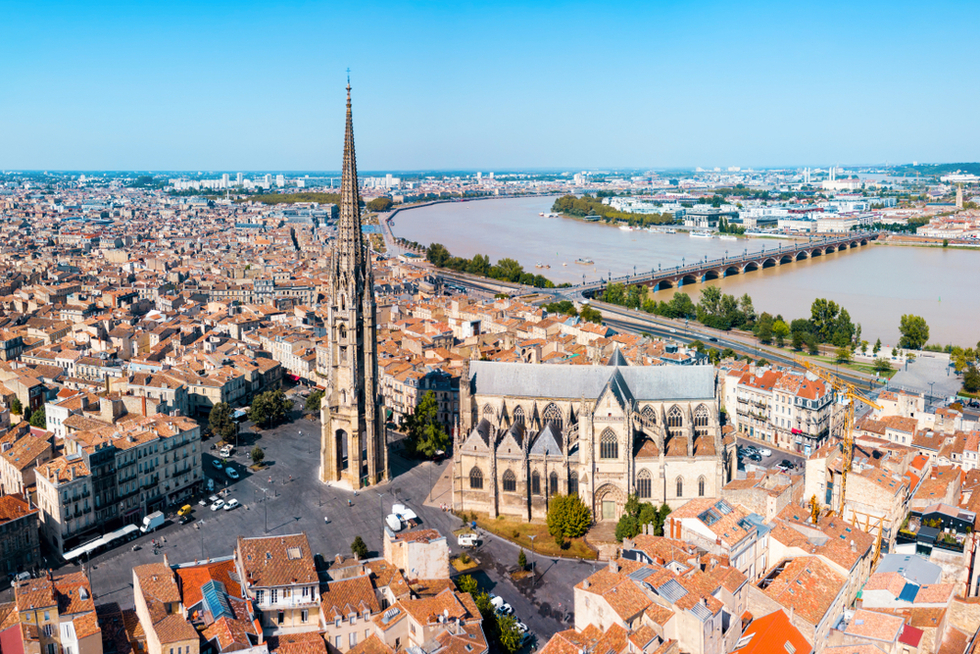578km (358 miles) SW of Paris; 549km (340 miles) W of Lyon
No longer called La Belle Endormie (“Sleeping Beauty”), today Bordeaux is one of the most vibrant cities in France, with property prices overtaking Lyon's and regularly listed as the city that most French people would like to move to. Its renaissance started soon after the arrival of mayor Alain Juppé in 1995. First the historic city center was cleaned up, revealing the splendors of its harmonious 18th-century architecture. Then a sleek tramway (streetcar) system was installed, and cars were banished from most of the historic center. Finally, the quays of the Garonne River were given an extensive overhaul and are now lined with public gardens, fountains, and playgrounds. The city has reconnected with the river, as best symbolized by the stunning 18th-century place de la Bourse, which opens directly on the banks and is now scrubbed down and bedecked with a “water mirror,” a long, shallow fountain that you can walk and splash around in on sunny days.
As you move away from the center, elegant streets give way to narrow cobbled streets, ancient churches, and a more youthful, funky Bordeaux. Home to 87,000 students, bringing the average age of the population down sharply when class is in session, they fuel a lively nightlife scene. The recent urban overhaul has bled into former working-class neighborhoods like Chartrons, where you can find galleries, bars, and restaurants. Other districts have been completely revamped, such as the cool Darwin complex on the other side of the Garonne, where old army barracks have been converted into bars, organic food shops, skate parks, workspaces, studios and live music venues.
Bordeaux, of course, is also a wine capital. Not only does it make a great base for exploring thousands of wine estates, you can also taste many of the region’s wares right here, particularly if you stop in at the Ecole du Vin or at the Cité du Vin, or one of the dozens of wine bars that have opened in recent years.









